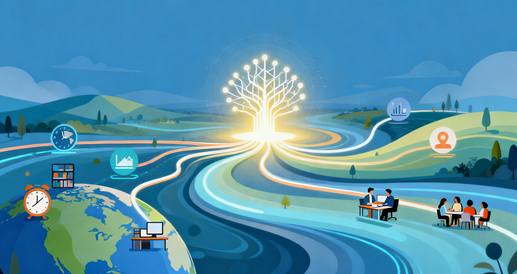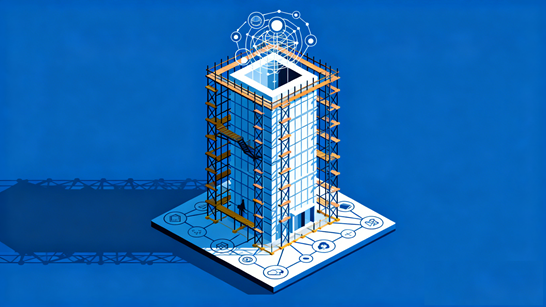The Immersive Spacetime Experience Engine
Transform ordinary trips into extraordinary时空experiences. This advanced system uses neuroscience and environmental psychology to design deeply immersive experiences that alter time perception and create lasting transformational memories.
The Immersive Spacetime Experience Engine: Design Trips That Transform Time and Memory
Why do some experiences feel timeless while others are instantly forgotten? This advanced system uses neuroscience and environmental psychology to engineer deeply immersive experiences that alter time perception and create memories that last a lifetime.
The Spacetime Immersion Framework
Temporal Engineering Principles
Time Dilation through Novelty Density The brain processes new experiences more slowly, making time feel expanded:
Novelty Clustering Strategy:
- Pack new experiences into the first 36 hours
- Combine multiple types of novelty (sensory, cognitive, emotional)
- Create "firsts" intentionally (first time trying, seeing, experiencing)
- Use unfamiliar routes and unexpected perspectives
Flow State Time Distortion When challenge perfectly matches skill, time perception alters:
Flow Trigger Design:
- Clear objectives for each activity
- Immediate feedback mechanisms
- Balance between skill level and challenge
- Elimination of distractions and interruptions
Spatial Immersion Design
Environmental Storytelling Transform physical spaces into narrative experiences:
Spatial Narrative Elements:
- Arrival Reveals: How locations are first encountered
- Progression Logic: The journey through spaces tells a story
- Symbolic Transitions: Meaningful movement between locations
- Climax Placement: Strategic positioning of peak experiences
Multi-Sensory Layer Engineering Create 360-degree sensory immersion:
Six Sensory Dimensions:
- Visual: Lighting, color, movement, visual patterns
- Auditory: Soundscapes, music, silence, acoustic qualities
- Olfactory: Scents that evoke memories and emotions
- Tactile: Textures, temperatures, physical interactions
- Gustatory: Taste experiences that anchor memories
- Proprioceptive: Body awareness, movement, spatial orientation
The Immersion Engineering Process
Phase 1: Pre-Experience Neural Preparation (1-2 Weeks Before)
Temporal Anchoring
- Vividly visualize the experience as if it's already happened
- Create detailed mental models of key moments
- Establish emotional expectations and anticipatory joy
Sensory Priming
- Gradually introduce elements that will appear in the experience
- Use music, scents, or images that will be encountered
- Build neural familiarity while maintaining novelty
Phase 2: Immersion Arc Design (During Planning)
The Immersion Curve Design experiences that build in intensity and meaning:
Arrival Phase (Hours 1-6): Sensory Reset
- Digital detox and familiar environment separation
- Gentle introduction to new sensory inputs
- Establishment of new temporal rhythms
Building Phase (Hours 6-36): Novelty Integration
- Progressive increase in experience intensity
- Layering of multiple sensory inputs
- Introduction of flow state activities
Peak Phase (Hours 36-72): Deep Immersion
- Maximum sensory richness and emotional intensity
- Flow state optimization and time distortion
- Core memory moment creation
Integration Phase (Final 24 hours): Meaning Making
- Reflective practices and experience processing
- Memory consolidation activities
- Transition preparation
Phase 3: Post-Experience Memory Engineering (1-4 Weeks After)
Memory Reactivation System
- Strategic re-exposure to sensory triggers
- Structured storytelling and experience sharing
- Photo sequencing that recreates the narrative arc
- Scent and music triggers for spontaneous recall
Advanced Immersion Techniques
Cross-Modal Experience Design
Sensory Synesthesia Principles Intentionally blend sensory experiences for enhanced impact:
Implementation Examples:
- Music playlists that match visual landscapes
- Scents that complement physical activities
- Textures that reinforce emotional tones
- Lighting that syncs with auditory experiences
Temporal Layering
Simultaneous Time Experience Create rich experiences that operate on multiple temporal levels:
Layering Methods:
- Historical context alongside present moment awareness
- Future projections integrated with current experiences
- Personal timeline connections to universal themes
- Cultural and generational time perspectives
Immersion Depth Progression
Gradual Intensity Building Prevent overwhelm while maximizing impact:
Progressive Immersion Strategy:
- Subtle Introduction: Gentle, familiar elements
- Complexity Building: Additional sensory layers
- Intensity Peaking: Full sensory engagement
- Release and Integration: Gradual return to baseline
Implementation Protocols
For Short Trips (3-4 Days)
Day 1: Sensory Reset & Foundation
- Morning: Digital detox and travel transition
- Afternoon: Gentle environmental exploration
- Evening: First novel sensory experiences
Day 2: Immersion Building
- Morning: Flow state activity introduction
- Afternoon: Multi-sensory experience layering
- Evening: Emotional peak engineering
Day 3: Integration & Closure
- Morning: Reflective practices
- Afternoon: Memory consolidation activities
- Evening: Meaningful closure rituals
For Extended Experiences (1-2 Weeks)
Week 1: Immersion Establishment
- Days 1-2: Sensory calibration and novelty introduction
- Days 3-5: Progressive immersion depth building
- Days 6-7: Peak experience and flow state optimization
Week 2: Transformation Integration
- Days 8-10: Experiential learning and skill development
- Days 11-13: Personal meaning extraction
- Day 14: Transition preparation and memory engineering
Immersion Metrics and Optimization
Experience Depth Assessment
Temporal Distortion Measures
- Subjective time passage vs actual time
- Flow state frequency and duration
- Moment-to-moment awareness quality
Sensory Engagement Metrics
- Multi-sensory integration effectiveness
- Novelty absorption capacity
- Sensory richness perception
Memory Vividness Indicators
- Detail recall accuracy and completeness
- Emotional memory strength
- Long-term retention quality
Continuous Improvement System
Post-Experience Analysis
- Which techniques created deepest immersion?
- What temporal patterns emerged?
- How did sensory design impact experience quality?
- What would enhance future immersion depth?
Design Refinement Process
- Adjust novelty density based on time perception effects
- Refine sensory layer combinations for optimal impact
- Improve flow state trigger effectiveness
- Enhance memory consolidation techniques
Specialized Applications
Transformational Travel
Use immersion engineering for personal growth:
- Design experiences that challenge limiting beliefs
- Create environments conducive to insight and clarity
- Build in reflection spaces for integration
- Use nature immersion for perspective shifts
Cultural Deep Dive
Enhance cultural immersion experiences:
- Layer historical, artistic, and social dimensions
- Design progressive cultural complexity exposure
- Create meaningful local connections
- Facilitate authentic cultural participation
Adventure Optimization
Maximize adventure experience impact:
- Engineer optimal challenge-skill balance
- Design sensory-rich natural environments
- Create peak experience moments
- Build in recovery and integration periods
Stop planning trips and start engineering transformations. Click "Use This Template" to design experiences that don't just pass time—they transform it.
Abrir Schedule Maker para personalizar e exportar.

The Stress-Free Experience Design System
Transform event planning from stressful logistics to joyful experience design. This system uses psychological principles to create seamless, memorable events while eliminating decision fatigue and last-minute chaos.
View details

The Digital Nomad Nervous System Optimizer
Optimize your nervous system for the digital nomad lifestyle. This neuroscience-based system addresses the unique cognitive challenges of location-independent work, from environmental adaptation to distributed presence management.
View details

The Knowledge Architecture Engineering System
Engineer robust knowledge architectures that withstand academic pressure. This system uses cognitive science principles to build interconnected knowledge frameworks, optimize neural pathways, and create durable academic understanding.
View details
